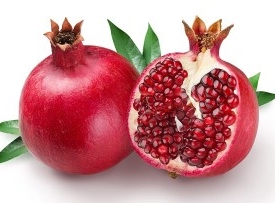Today, Won derful is the most commonly produced pomegranate variety in Peru. There is still work to be done, however, to adapt the plant’s needs to Peru’s climatic conditions and soil type. Producers continue to suffer from fruit breakage andpomegranates_ffp limited capacity.
derful is the most commonly produced pomegranate variety in Peru. There is still work to be done, however, to adapt the plant’s needs to Peru’s climatic conditions and soil type. Producers continue to suffer from fruit breakage andpomegranates_ffp limited capacity.
To address such limitations, Peru will be introducing six new pomegranate varieties to replace Wonderful, thanks to a partnership between Peru’s National Agrarian Innovation Institute (INIA) and companies from Israel.
INIA fruit director William Daga told www.freshfruitportal.com that the new varieties are expected to arrive in February 2014. He could not give the variety names but said they should adapt well to Andean conditions.
“These are modified varieties that the Israelis have. We cannot give names because some are in codes and others have royalties, so it is difficult to easily release them,” he said.
As Peru’s most common pomegranate variety, Wonderful has posed problems due to its high need for water and demanding soil requirements. The newly introduced varieties are expected to alleviate such problems.
“In the occupied areas in Peru’s valley, we have sandy soil with little water and that’s where these new pomegranate varieties will do better. The other part is that we will provide new production alternatives to exporters and agricultural businesses with these varieties.
“Wonderful is a known, tested variety but there are other good varieties that we could work with here,” he said.
“These are higher production varieties, with a bright red color and tolerance of nematodes. They need less water and adapt to salty, sandy soil.”
Plantings for these new varieties are planned for Lima and Ica, although other zones are under consideration.
“I think we can increase national production volume by 30%. We are going to prioritize export to Spain and Canada, among others. We’ll be able to produce 100 to 200 hectares more,” he said.
 derful is the most commonly produced pomegranate variety in Peru. There is still work to be done, however, to adapt the plant’s needs to Peru’s climatic conditions and soil type. Producers continue to suffer from fruit breakage andpomegranates_ffp limited capacity.
derful is the most commonly produced pomegranate variety in Peru. There is still work to be done, however, to adapt the plant’s needs to Peru’s climatic conditions and soil type. Producers continue to suffer from fruit breakage andpomegranates_ffp limited capacity.To address such limitations, Peru will be introducing six new pomegranate varieties to replace Wonderful, thanks to a partnership between Peru’s National Agrarian Innovation Institute (INIA) and companies from Israel.
INIA fruit director William Daga told www.freshfruitportal.com that the new varieties are expected to arrive in February 2014. He could not give the variety names but said they should adapt well to Andean conditions.
“These are modified varieties that the Israelis have. We cannot give names because some are in codes and others have royalties, so it is difficult to easily release them,” he said.
As Peru’s most common pomegranate variety, Wonderful has posed problems due to its high need for water and demanding soil requirements. The newly introduced varieties are expected to alleviate such problems.
“In the occupied areas in Peru’s valley, we have sandy soil with little water and that’s where these new pomegranate varieties will do better. The other part is that we will provide new production alternatives to exporters and agricultural businesses with these varieties.
“Wonderful is a known, tested variety but there are other good varieties that we could work with here,” he said.
“These are higher production varieties, with a bright red color and tolerance of nematodes. They need less water and adapt to salty, sandy soil.”
Plantings for these new varieties are planned for Lima and Ica, although other zones are under consideration.
“I think we can increase national production volume by 30%. We are going to prioritize export to Spain and Canada, among others. We’ll be able to produce 100 to 200 hectares more,” he said.







